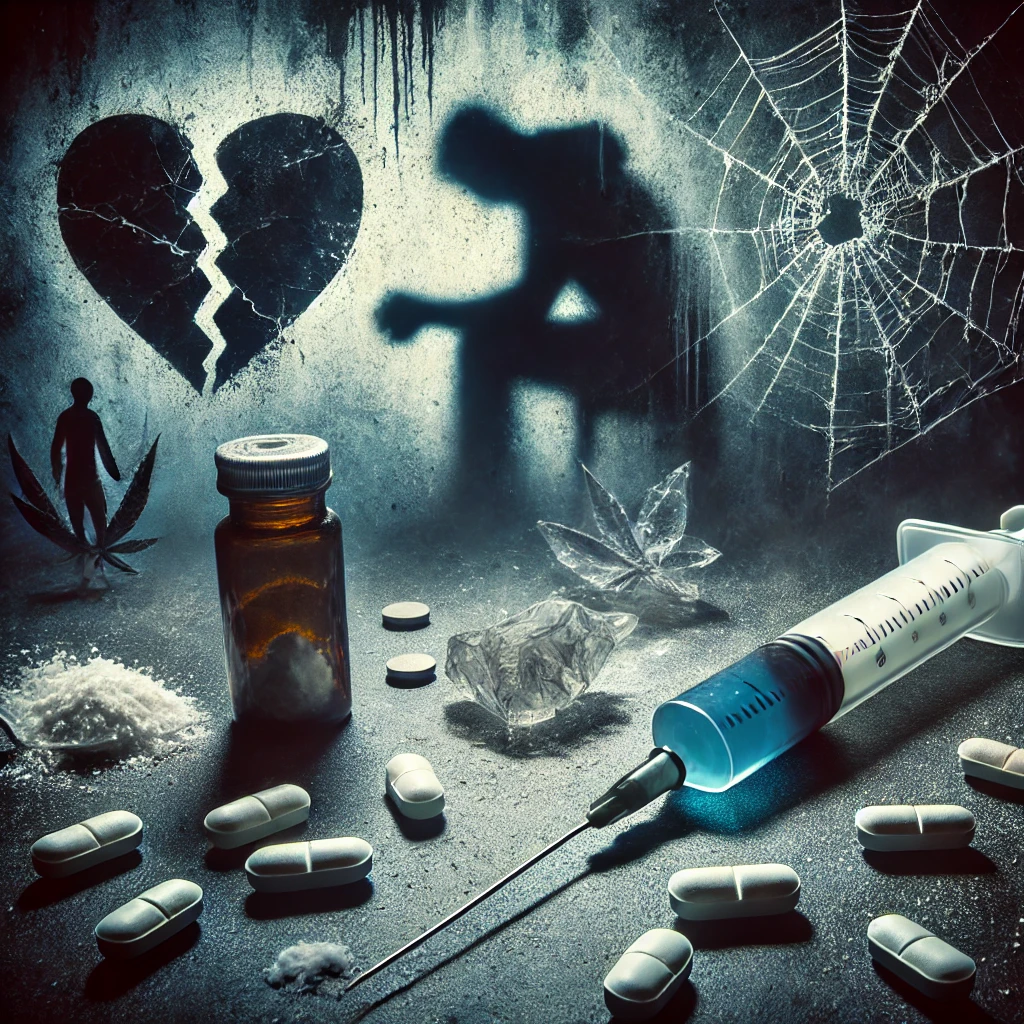Drug abuse is a pervasive issue that affects millions of individuals worldwide, leading to significant health, social, and economic consequences. Despite efforts to curb drug use through education, prevention, and rehabilitation programs, the problem persists and continues to wreak havoc on individuals and communities. This article explores the harmful effects of drug abuse, emphasizing the importance of addressing this critical issue.
Health Risks of Drug Abuse
1. Physical Health Deterioration: Drug abuse can lead to severe physical health problems, varying depending on the substance used. Common physical health issues include cardiovascular diseases, respiratory problems, liver damage, and neurological impairments. For instance:
- Stimulants (e.g., cocaine, methamphetamine) can cause heart attacks, strokes, and respiratory failure.
- Opioids (e.g., heroin, prescription painkillers) can lead to respiratory depression, heart infections, and liver damage.
- Depressants (e.g., benzodiazepines, barbiturates) can cause respiratory problems, impaired motor function, and overdose.
2. Mental Health Disorders: Drug abuse is closely linked to various mental health disorders. The psychoactive effects of drugs can exacerbate or contribute to the development of mental illnesses such as depression, anxiety, schizophrenia, and bipolar disorder. Chronic drug use can alter brain chemistry, leading to long-term cognitive impairments and emotional instability.
3. Addiction and Dependency: One of the most significant health risks of drug abuse is addiction. Addiction is a chronic disease characterized by compulsive drug seeking and use, despite harmful consequences. Dependency on drugs can lead to severe withdrawal symptoms when not using the substance, making it challenging to quit without professional help.
4. Infectious Diseases: Drug abuse, particularly through intravenous drug use, increases the risk of infectious diseases such as HIV/AIDS and hepatitis. Sharing needles and other drug paraphernalia can transmit these infections, posing a severe public health risk.
Social and Economic Consequences
1. Family and Relationship Strain: Drug abuse often leads to strained relationships with family and friends. The erratic behavior, financial strain, and neglect of responsibilities associated with drug use can create a toxic environment for loved ones. This strain can result in broken families, domestic violence, and child neglect or abuse.
2. Workplace Impact: Substance abuse negatively affects workplace productivity and safety. Employees who abuse drugs are more likely to have higher absenteeism rates, reduced productivity, and an increased risk of workplace accidents. The economic impact on businesses includes higher healthcare costs, increased insurance premiums, and potential legal liabilities.
3. Crime and Legal Issues: Drug abuse is often linked to criminal activities, including possession, trafficking, theft, and violence. Individuals addicted to drugs may engage in illegal activities to fund their addiction, leading to incarceration and a criminal record. This involvement with the criminal justice system can have long-lasting effects on an individual’s life, including limited employment opportunities and social stigma.
4. Economic Costs: The economic burden of drug abuse is substantial, encompassing healthcare expenses for treating drug-related health issues, lost productivity, and costs associated with law enforcement and criminal justice. Additionally, social services and rehabilitation programs aimed at addressing drug abuse require significant funding.
Environmental Impact
Drug production and trafficking also have detrimental effects on the environment. Illegal drug cultivation often involves deforestation, soil degradation, and water pollution due to the use of harmful chemicals. The environmental impact extends to wildlife and ecosystems, further highlighting the broader consequences of drug abuse.
Addressing the Issue
1. Education and Prevention: Education and prevention programs are crucial in addressing drug abuse. These programs should focus on raising awareness about the dangers of drug use, promoting healthy lifestyles, and providing resources for those at risk. Schools, communities, and healthcare providers play a vital role in delivering these messages.
2. Treatment and Rehabilitation: Effective treatment and rehabilitation programs are essential for individuals struggling with drug addiction. These programs should offer comprehensive services, including medical treatment, counseling, behavioral therapy, and support groups. Access to affordable and effective treatment options is critical for recovery and preventing relapse.
3. Policy and Regulation: Governments and policymakers must implement and enforce regulations aimed at reducing drug abuse. This includes controlling the availability of illicit drugs, regulating prescription medications, and supporting law enforcement efforts to combat drug trafficking. Additionally, policies should focus on rehabilitation rather than punishment, emphasizing support and recovery for individuals with substance use disorders.
4. Community Support: Community support systems are vital in helping individuals recover from drug abuse. Support networks, including family, friends, and community organizations, provide emotional support, guidance, and resources for those in need. Building strong, supportive communities can help prevent drug abuse and assist individuals in their recovery journey.
Conclusion
The harmful effects of drug abuse extend beyond individual health, impacting families, communities, and economies. Addressing drug abuse requires a multifaceted approach, including education, prevention, treatment, and policy changes. By understanding the risks and consequences associated with drug abuse, we can work towards a healthier, safer, and more supportive society for all.
